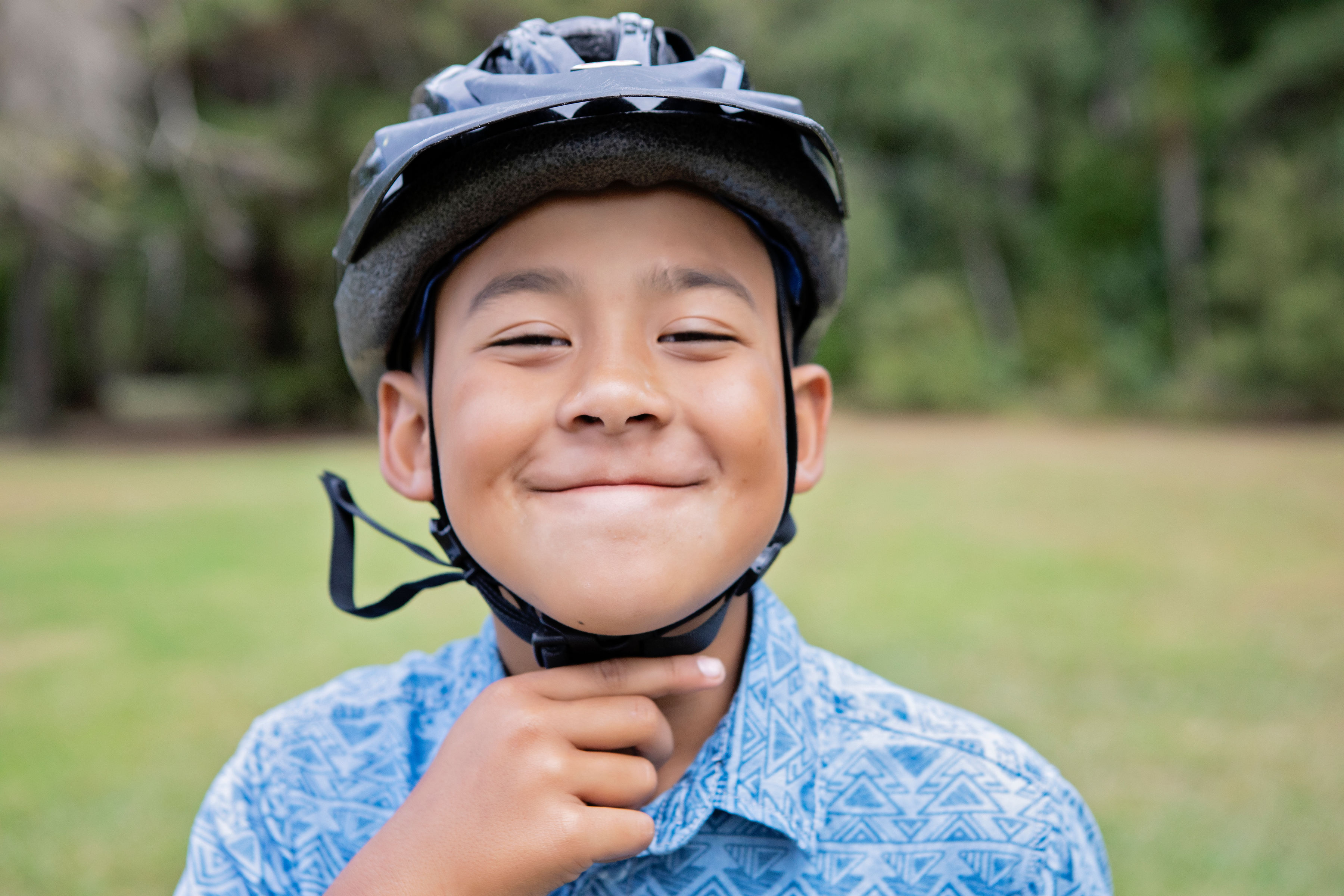Bikes, skateboards and scooters: 5 - 9 years

How big a problem is it?
The most common causes of injury for cyclists, scooter riders and skateboarders are generally wounds, broken bones, concussions and head injuries. More than 140 children are hospitalised with skateboard-related injuries alone every year and thirty from scooter-related injury. Over 300 children are hospitalised for cycle-related injuries per year.
Who does it affect?
It is mostly older children, followed by 5-9 year olds, that are affected by bike, skateboard and scooter-related injuries.
Top Tips
Teach your children to stay safe by always wearing a properly-fitting helmet with an approved safety standard. It reduces the risk of a serious brain injury by 74%.
Wrist guards and knee and elbow pads are also great additions when using scooters and skateboards as they protect those areas most likely to be injured by a fall.
Your kids should ideally only use scooters and skateboards in places set aside specifically for their use, and they should always watch out for pedestrians.
Teach your kids to follow the 2-4-1 steps on how to wear a helmet correctly.
2: The helmet should be no more than two fingers above the eyebrow

4: The straps should be adjusted under the ears to form 2 ‘Vs’

1: Only 1 finger should fit over the chin strap

If your child needs to use the road when biking, make sure they know how to make the correct hand signals and keep straight without weaving in and out. It is important that cyclists can be seen easily by other vehicles on the road, so encourage the use of reflective clothing and check that your children’s bikes have reflective lights.
Always model proper road behaviour when riding bikes with your children so they learn how to be safe when you’re not with them.
Be smart, be safe and be seen – always plan safe cycle routes. No helmet - don't bike. Wear reflective clothing.
First Aid
If your child has had a serious fall, they may have bone fracture or a serious head injury and are in pain or for any of the following reasons, call 111 immediately. Do this if your child:
|
There are also some things you can do straight away:
Fractures First Aid
Keep the injured arm or leg still. Someone who knows how to might use a splint to keep it still.
You can support the injured arm or leg with a pillow or sling.
Raise the arm or leg higher than the heart to help reduce swelling.
Your child will need pain relief.
If your child does not need an ambulance take them to the nearest hospital Emergency Department
Loss of consciousness First Aid
Follow Drs ABCD to start CPR
D Dangers? Check for any dangers to yourself such as electricity or traffic.
R Responsive? Check responsiveness by calling loudly and shaking the child's arm.
S Send for help. Dial 111 and confirm an ambulance is on its way. Use the appropriate emergency number in other countries.
A Airway. Open the airway by moving the head into a neutral position and lifting the chin. Do not tilt the head back too far.
B Breathing. Look and feel for movement of the lower chest and stomach area. Listen and feel for air coming from the nose or mouth.
C CPR. If the child is not breathing, start CPR - 30 compressions to 2 breaths. Put the child on a firm surface. Place 2 fingers of one hand (for a baby) or the heel of one hand (for a child) in the centre of the chest just below the nipples. Push down hard and fast 30 times in about 15 seconds (push down one-third of chest depth).
Once you have completed 30 compressions (pushes) on the chest, breathe into the baby's mouth 2 times. Seal your lips around the baby's mouth and nose. For a child over 1, you may need to breathe into their mouth and pinch their nose closed. Gently puff into the child until you see their chest rise.
Continue with the cycle of 30 chest compressions and 2 breaths until the ambulance arrives.
D Defibrillator. Attach defibrillator as soon as it is available and follow prompts.
Link to Safekids’ resources
Bicycle, Scooter and Skateboard Injury Prevention Resources
Links to other organisations’ resources
Skates, Scooters and Skateboards Safety
Skateboard Skills - Teacher Resources NZTA
Skateboard Safety - Teacher Resources NZTA
